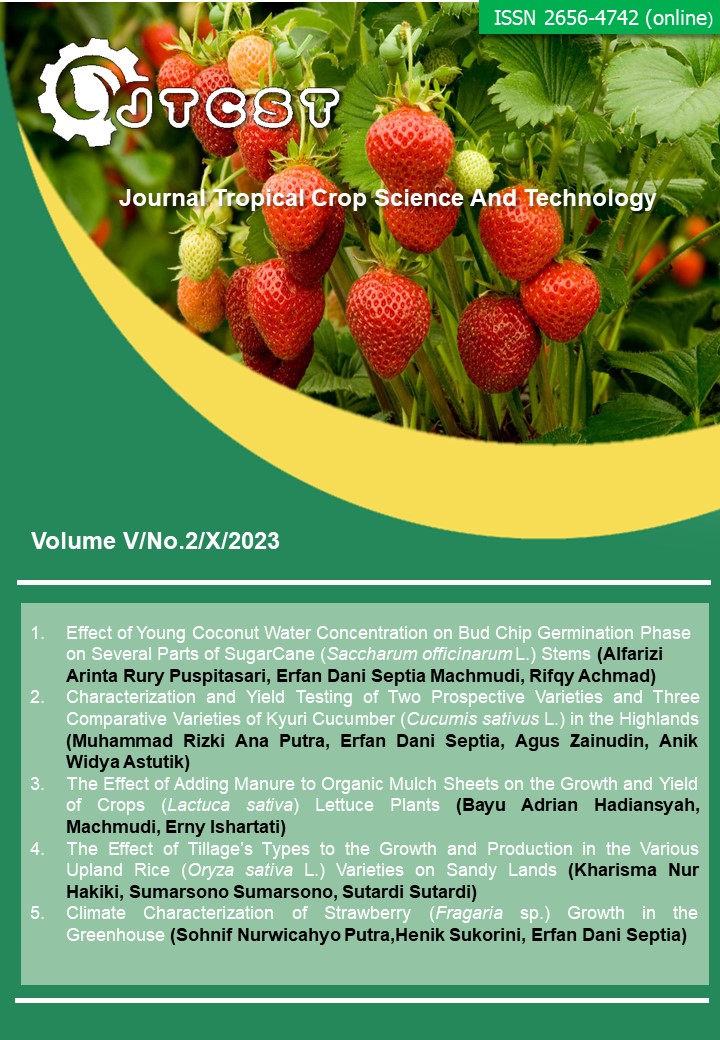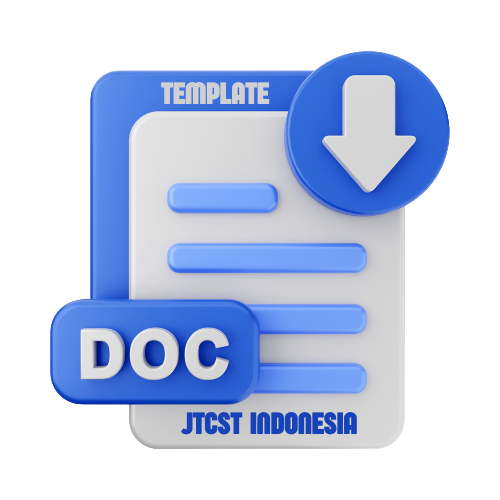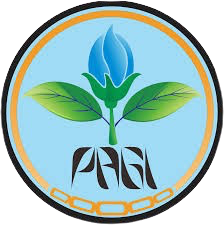Characterization and Yield Testing of Two Prospective Varieties and Three Comparative Varieties of Kyuri Cucumber (Cucumis sartivus L.) in the Highlands
DOI:
https://doi.org/10.22219/jtcst.v5i2.29759Keywords:
environment, genetic, genotypeAbstract
Cucumber (Cucumis sativus L.) is one type of vegetable from the cucurbitaceae family that has been grown by farmers in Indonesia. The research was conducted for 4 months from September 23 to December 13, 2022 in one of the experimental fields owned by PT Aditya Sentana Agro. The purpose of this study was to determine whether the 2 candidate varieties CI-88 and CI-87 of kyuri cucumber tested would show significant differences in characters from 3 comparison varieties F1 MK 01, F1 MK 02, F1 MK 03 and to determine whether the results obtained from the 2 candidate varieties CI-88 and CI-87 of kyuri cucumber to be used as varieties and produced. This study consisted of 2 genotypes of hybrid variety candidates CI-88 and CI-87 and 3 comparison varieties namely F1 MK 01, F1 MK 02 and F1 MK 03 which were used as treatments. The three comparison varieties were used because they were in high demand in the market so that they had a high selling value and had a good response from farmers. Qualitative characteristics observed were stem shape, leaf shape, flower color, fruit shape, fruit skin color, fruit flesh color, and fruit taste test. The results of observations of qualitative character traits are presented in the form of tables and picture documentation. The results of quantitative characterization observations include stem diameter, fruit weight per plant, fruit weight per fruit, fruit diameter, fruit length, number of fruits per plant, leaf width, leaf length, age from flowering and age from harvest. The results of the two candidate varieties tested have the opportunity to be developed and registered as new varieties because the results obtained are comparable to the comparator varieties already on the market..
Downloads
References
Ahyar, Y. 2018. “Peningkatan Produktivitas Tanah Kering Masam untuk Pertumbuhan dan Hasil Tanaman Mentimun Jepang (Cucumis sativus L.) dengan Pemberian Tepung Rajungan dan Fungi Mikoriza Arbuskula”. Doctoral Dissertation, UIN Sunan Gunung Djati Bandung.
Ardian, B. Suprayogi dan P. Benyamin Timotiwu. 2016. Evaluasi Daya Hasil Mentimun Hibrida Persilangan Dua Varietas Mentimun. J. Agrotek Tropika. Vol. 4, No. 3: 186 – 192, September 2016.
Baihaki, A. 2002. Stabilitas Hasil Berdasar Tingkat Daya Hasil Tanaman Dan Pemanfaatannya. Pemberitaan Universitas Padjadjaran. No 14. Hal.; 24- 32.
Bayu Kusuma, Syakhril dan Bambang Supriyanto. 2012. Respon Beberapa Varietas Mentimun (Cucumis Sativus L.) Terhadap Pemberian Air Kelapa Tua. Jurnal Ziraa’ah. Volume 35 Nomor 3, Oktober 2012 Halaman 197-203.
Birnadi, S. 2017. “Respons Mentimun Jepang (Cucumis sativus L.) Var. Roberto terhadap Perendaman Benih dengan Giberelin (GA3) dan Bahan Organik Hasil Fermentasi (BOKASHI)”. Jurnal ISTEK. 10(2):77-90. Bandung: Fakultas Sains dan Teknologi.
Borojevic, S. 2005. Principles and Methods of Plant Breeding. Development in Crop Science 17. Elsevier, Amsterdam.
Cahyono, B. 2006. Timun. Penerbit Cv Aneka Ilmu. Semarang.
Cahyono, B., 2003. Mentimun. Aneka Ilmu. Semarang. 122 Hal.
Daryono, B.S., Hayuningtyas, S.D., Dan Maryanto, S.D. 2012. Perakitan Melon (Cucumis melo L.) Kultivar Melodi Gama 3 Dalam Rangka Penguatan Industri Pertanian Nasional. Prosiding Seminar Nasional dan Call For Paper Ep Unnes. Semarang. Pp. 245-256.
Dimov, Arnaoudov Boyan., Manusheva, Boteva Hriska., Ivanova, and Dintcheva Tsvetanka (2016). Comparative study of greenhouse cucumber varieties. Евразийский Союз Ученых (ЕСУ). 3(24):105-108, https:// www.researchgate.net/publication/307466407.
Elma Rahmawati. 2018. Pengaruh Berbagai Jenis Media Tanam Dan Konsentrasi Nutrisi Larutan Hidroponik Terhadap Pertumbuhan Tanaman Mentimun Jepang (Cucumis Sativus L.). Fakultas Sains Dan Teknologi. Uin Alauddin Makassar.
Guan, W., E.T. Maynard, B. Aly, J. Zakes, D. S. Egel and L.L. Ingwel. 2019. Parthenocarpic Cucumber Cultivar Evaluation in High-tunnel Production. Journal Hort Technology. 29(5): 634- 642.
Haryadi. 2008. Mutu Buah dan Sayuran.
Permatasari, I. dan Kurniasari, L. 2022. Efektivitas Proporsi Bunga Dan Pembuangan Mahkota Bunga Betina Terhadap Produksi Benih Mentimun Jepang Di Dalam Greenhouse. Agropross, National Conference Proceedings of Agriculture.
Jumin, H. B. 2002. Agronomi. Jakarta: Raja Grafindo Persada. Hal 7- 17.
Karamina, H. ∙ E. Indawan∙ A.T. Murti∙ T. Mujoko. 2020. Respons pertumbuhan dan hasil tanaman mentimun terhadap aplikasi pupuk NPK dan pupuk organik cair kaya fosfat. Jurnal Kultivasi. Vol. 19 (2) Agustus 2020.
Kementerian Pertanian Republik Indonesia Pusat Perlindungan Varietas Tanaman Dan Perizinan Pertanian. 2014. Panduan Pelaksanaan Uji (PPU) Keunikan, Keseragaman Dan Kestabilan Mentimun (Cucumis sativus L.).
Lakitan, B. 2011. Dasar - Dasar Fisiologi Tumbuhan. Pt. Raja Grafindo Persada. Jakarta.
Manalu, B. 2013. Sukses Bertanam Mentimun. ARC Media. Jakarta. 80 hal.
Nandia Arti Tiyandara, Oktarina dan Insan Wijaya. 2020. Pertumbuhan Dan Produksi Mentimun (Cucumis Sativus L.) Pada Perbedaan Konsentrasi Pupuk Cair, Pemangkasan Dan Jarak Tanam. Jurnal Agroqua. Volume 18 No. 1 Tahun 2020.
Nwofia GE, Amajuoyi AN, Mbah EU. Response Of Three Cucumber Varieties (Cucumis Sativus. L) To Planting Season and NPK Fertilizer Rate In The Wet Tropical Lowlands: Sex Expression, Yield And Relationships Among Yield And Related Traits. Internasional. Journal of Agriculture and Forestry. 2015; 5:3037. https://doi.org/10.5923/j.ijaf.20150501.05.
Rahmi, Yusvita Maulidia, Sri Lestari Purnamaningsih dan Sumeru Ashari. 2015. Tingkat Viabilitas Benih Mentimun (Cucumis Sativus L.) Hasil Penyerbukan. Jurnal Produksi Tanaman. 3(1):50-55.
Rilgahappy, Rajendra Febie. 2022. Pengaruh Kombinasi Dosis Pemupukan Pupuk P (Sp-36) Dan Pupuk K (Zk) Terhadap Pertumbuhan Dan Hasil Produksi Tanaman Mentimun Jepang (Cucumis Sativus L.) Varietas Ronaldo F1. Undergraduate (S1) Thesis, Universitas Muhammadiyah Malang.
Samsul Idris, Nikmah Musa and Wawan Pembengo. 2018. Production of Cucumber Plants (Cucumis sativus L.) Due to Pruning and Amount of Seeds Per Planting Hole. JATT. Vol. 7 No. 2 Agustus 2018: 229 - 235
Sudjianto, U. dan V. Kristiani. 2009. Studi Pemulsaan Dan Dosis Npk Pada Hasil Buah Melon (Cucumis melo L.). Jurnal Sains Dan Teknologi. 2 (2): 1-7.
Sumpena U. 2006. Uji Daya Gabung dan Heterosis pada hasil Persilangan dialel Mentimun. Jur. Agriv. Vol 6 (1) 32 – 40.
Sumpena, U. 2001. Budidaya Mentimun Intensif Dengan Mulsa Secara Tumpang Gilir. Jakarta: Penebar Swadaya.
Sumpena. 2001. Budidaya Mentimun. Penerbit Pt Penebar Swadaya, Jakarta.
Taufik. M, Fahrurrozi dan Oktiana Sari. 2017. Karakterisasi Dan Identifikasi Sepuluh Genotipe Mentimun (Cucumis Sativus L.) Pada Tanah Ultisol. Seminar Nasional. Inovasi Teknologi Pertanian Modern Mendukung Pembangunan Pertanian Berkelanjutan.
Waldmann, P., J. Hallander, F. Hoti dan MJ Sillanpaa. 2008. Efficient Markov Chain Monte Carlo Implementation of Bayesian Analysis of Additive and Dominant Genetic Variants in Noninbred Pedigrees. Genetics.179: 1101– 1112.
Wiguna, G. 2014. Keragaan Fenotipik Beberapa Genotipe Mentimun (Cucumis Sativus L.). Jurnal Mediagro, 10 (2), 45–56.
Wijaya, S. A., N. Basuki, Dan S. L. Purnamaningsih. 2015. Pengaruh Waktu Penyerbukan Dan Proporsi Bunga Betina Dengan Bunga Jantan Terhadap Hasil Dan Kualitas Benih Mentimun (Cucumis Sativus L.) Hibrida. Produksi Tanaman, 3(8):615-622.
Wijaya, Y. T. 2016. Respon Berbagai Varietas Mentimun (Cucumis Sativus L.) Terhadap Frekuensi Penyiraman. Sekolah Tinggi Ilmu Pertanian (Stiper) Dharma Wacana Metro.
Mading, Y. Mutiara, D dan Novianti, D. 2021. Respons Pertumbuhan Tanaman Mentimun (Cucumis Sativus L.) Terhadap Pemberian Kompos Fermentasi Kotoran Sapi. Jurnal Indobiosains. Vol. 3 No. 1. Edisi Februari 2021.
Zamzami, K., M. Nawawi., N. Aini, 2015. Pengaruh Jumlah Tanaman Per Polibag dan Pemangkasan Terhadap Pertumbuhan dan Hasil Tanaman Mentimun Kyuri (Cucumis sativus L.). Jurnal Produksi Tanaman, Volume. 3, No. 2, hlm. 116
Downloads
Published
How to Cite
Issue
Section
License
Copyright (c) 2023 Muhammad Rizki Ana Putra, Agus Zainudin, Erfan Dani Septia, Anik Widya Astutik

This work is licensed under a Creative Commons Attribution-ShareAlike 4.0 International License.
Authors who publish with this journal agree to the following terms:
- Authors retain copyright and grant the journal right of first publication with the work simultaneously licensed under a Creative Commons Attribution License that allows others to share the work with an acknowledgement of the work's authorship and initial publication in this journal.
- Authors are able to enter into separate, additional contractual arrangements for the non-exclusive distribution of the journal's published version of the work (e.g., post it to an institutional repository or publish it in a book), with an acknowledgement of its initial publication in this journal.
- Authors are permitted and encouraged to post their work online (e.g., in institutional repositories or on their website) prior to and during the submission process, as it can lead to productive exchanges, as well as earlier and greater citation of published work (See The Effect of Open Access).











